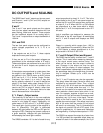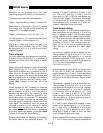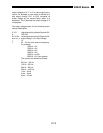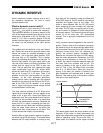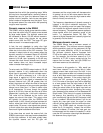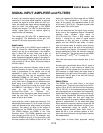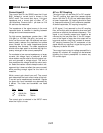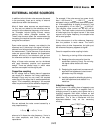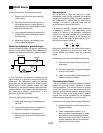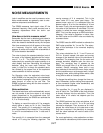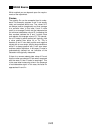
3-21
SR850 Basics
In order to achieve the best accuracy for a given
measurement, care must be taken to minimize the
various noise sources which can be found in the
laboratory. With intrinsic noise (Johnson noise, 1/f
noise or input noise), the experiment or detector
must be designed with these noise sources in
mind. These noise sources are present regardless
of the input connections. The effect of noise sourc-
es in the laboratory (such as motors, signal gener-
ators, etc.) and the problem of differential grounds
between the detector and the lock-in can be mini-
mized by careful input connections.
There are two basic methods for connecting a volt-
age signal to the lock-in - the single-ended con-
nection is more convenient while the differential
connection eliminates spurious pick-up more
effectively.
Single-Ended Voltage Connection (A)
In the first method, the lock-in uses the A input in a
single-ended mode. The lock-in detects the signal
as the voltage between the center and outer con-
ductors of the A input only. The lock-in does not
force the shield of the A cable to ground, rather it
is internally connected to the lock-in's ground via a
resistor. The value of this resistor is chosen in the
INPUT menu. Float uses 1 kΩ and Ground uses
10Ω. This avoids ground loop problems between
the experiment and the lock-in due to differing
ground potentials. The lock-in lets the shield
'quasi-float' in order to sense the experiment
ground. However, noise pickup on the shield will
appear as noise to the lock-in. This is bad since
the lock-in cannot reject this noise. Common mode
noise, which appears on both the center and
shield, is rejected by the 100 dB CMRR of the
lock-in input, but noise on only the shield is not
rejected at all.
Differential Voltage Connection (A-B)
The second method of connection is the differen-
tial mode. The lock-in measures the voltage differ-
ence between the center conductors of the A and
B inputs. Both of the signal connections are shield-
ed from spurious pick-up. Noise pickup on the
shields does not translate into signal noise since
the shields are ignored.
When using two cables, it is important that both
cables travel the same path between the experi-
ment and the lock-in. Specifically, there should not
be a large loop area enclosed by the two cables.
Large loop areas are susceptible to magnetic
pickup.
Common Mode Signals
Common mode signals are those signals which
appear equally on both center and shield (A) or
both A and B (A-B). With either connection
scheme, it is important to minimize both the
common mode noise and the common mode
signal. Notice that the signal source is held near
ground potential in both illustrations above. If the
signal source floats at a nonzero potential, the
signal which appears on both the A and B inputs
will not be perfectly cancelled. The common mode
rejection ratio (CMRR) specifies the degree of can-
cellation. For low frequencies, the CMRR of 100
dB indicates that the common mode signal is can-
celed to 1 part in 10
5.
Even with a CMRR of
100 dB, a 100 mV common mode signal behaves
like a 1 µV differential signal! This is especially
bad if the common mode signal is at the reference
frequency (this happens a lot due to ground
loops). The CMRR decreases by about 6 dB/
octave (20 dB/decade) starting at around 1 kHz.
INPUT CONNECTIONS
Experiment
Signal
Source
R
SR850 Lock-In
A
+
-
Grounds may be at different potentials
B
Loop
Area
Experiment
Signal
Source
R
SR850 Lock-In
A
+
-
Grounds may be at different potentials



